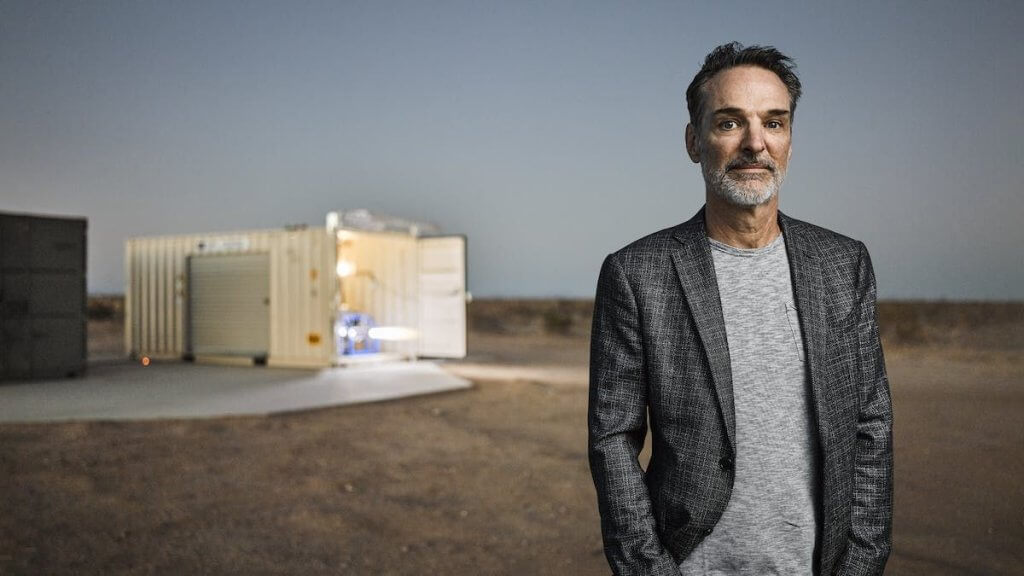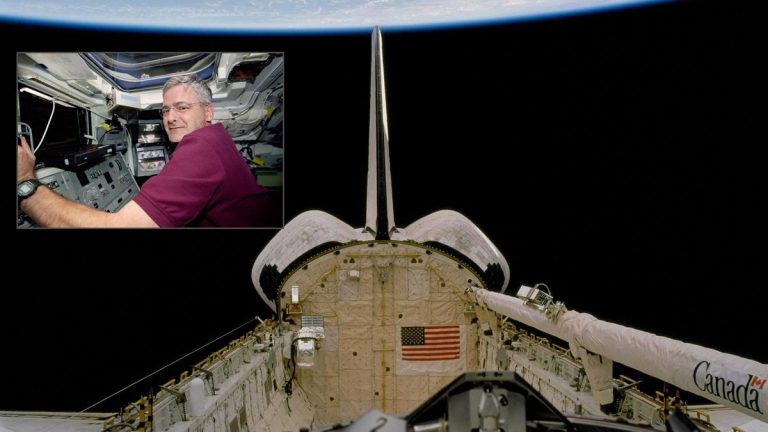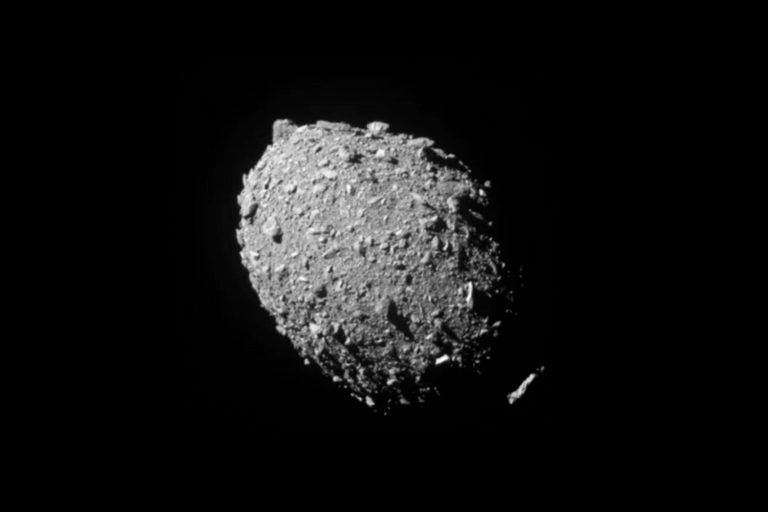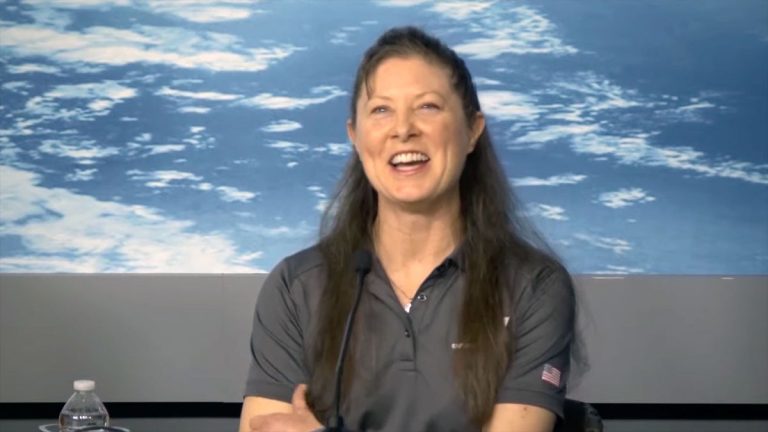
Impulse Space CEO Tom Mueller talks early days at SpaceX, moon bases and a booming space industry (exclusive) (Image Credit: Space.com)
Practically a living legend in the modern aerospace industry for his advancements in rocket propulsion, Impulse Space Founder and CEO Tom Mueller knows a thing or two about designing reliable 21st century launch vehicles.
As an engineer personally recruited by Elon Musk to help kickstart SpaceX way back in 2002, Mueller became the fledgling company’s first employee where he worked side-by-side with Musk for nearly two decades. There in those nascent days, the Idaho native lent his expertise in developing the Merlin rocket engine which, under Mueller’s expert guidance, would eventually evolve into today’s version that powers SpaceX’s trusty Falcon 9 rocket and powerful Falcon Heavy launcher.
In late 2020, Mueller left SpaceX to form Impulse Space, a California-based venture created to provide precise orbital maneuvering vehicles for last-mile payload delivery in low Earth orbit (LEO). The company’s state-of-the-art Mira spacecraft and propulsion systems are proficient in delivering multiple payloads to unique orbits from a single launch by moving beyond drop-off orbits and allowing for customized placements using preferred choices of altitude, inclination, and plane.
Related: These 2 private companies aim to beat SpaceX to Mars with 2024 flight

Space.com spoke with Mueller to reflect back on those heady days at SpaceX, hear lessons learned from Elon Musk, discuss Impulse Space’s goals as a new startup in the ever-growing arena and the future of the in-space logistics services industry.
Impulse Space’s first orbital mission, LEO Express-1, is scheduled for November aboard SpaceX’s Transporter-9 rideshare mission which will carry its new orbital service vehicle, Mira. A Mars mission with Relativity Space could launch sometime in 2026.

Thomas Mueller is an aerospace engineer known for his groundbreaking work in rocket engine design. Mueller was a founding employee of SpaceX and is currently the founder and CEO of Impulse Space.
Space.com: Looking back twenty years, what were those wild early days of SpaceX like dreaming of reusable rockets and and starships to Mars?
Tom Mueller: Back then very few people were believers. I was doubtful at first and I even asked for salary guarantees before I would leave my career at [automotive and aerospace firm TRW Inc.]. I was mid-career there and so it was difficult for me to walk away from that. It was high risk but I just had to do it. And I couldn’t hire anybody that I knew from industry because they were all nonbelievers. We made it happen and changed the whole paradigm and now everybody’s believers in new space and it’s really started something cool.
We didn’t know where we were exactly headed. I knew Elon wanted to go to Mars. We wanted to built a giant rocket and we wanted to do it pretty fast. I think it took longer than we expected. Certainly it took a lot longer to get Falcon 1 flying than we had set out to do, and famously almost went broke. Somehow we just barely made it through and here we are. Now the Falcon 9 is the most amazing vehicle in history. There was this faster, better, cheaper thing going on and everybody said that you couldn’t do it. SpaceX proved it. They’ve got the best rocket, the most reliable, that’s also the world-beater on cost that’s flown over 230 times without failure.
Space.com: What are some standout moments for you in heading up the design of Falcon’s brilliant Merlin engine and witnessing its phenomenal success?
Mueller: With respect to the Merlin and the Falcon 9 in particular, that first launch of Falcon Heavy in February of 2018 stands in my mind pretty high. That was a real spectacle to see. I was out at the VIP viewing area, half-way between the launch pad and the landing pad, and the perfect place to see that. Certainly the first time we docked with the International Space Station was pretty memorable and astounding.

Space.com: When you departed SpaceX to form Impulse Space, what were your goals and visions for the company when you started out?
Mueller: I’m a huge believer in Starship and I helped architect that vehicle. One of the first things Elon asked me when I became Propulsion CTO was what would it take to get one-hundred tons to Mars. I’m the one that changed it from hydrogen to methane because that was just the lowest cost per ton to Mars and back. I still feel like I’m a SpaceX’er and that I’m a part of the company. Starship is greatly lowering the cost and increasing access to LEO. But it’s going to have a hard time getting to the higher energy orbits. It takes refueling and that takes a long time to develop.
What I wanted to do was to make it easier to get everywhere else above LEO to these higher energy orbits. That’s where we come in. Adding low-cost efficient propulsive spacecraft that can go to LEO on reusable launch vehicles and then go everywhere else in the inner solar system.
Space.com: How does Impulse Space help facilitate better orbital logistics for clients?
Mueller: When you take a hundred tons, especially if it’s a whole bunch of smaller payloads, to a certain orbit on a starship, most of them are going to want to be in a different orbit from where they end up. There are an infinite number of orbits if you think about it. It’s truly 3D space. There are different altitudes, different planes, different eccentricities, and different timing to be over a certain spot on the Earth at a certain time. Everybody wants to be in their spot and we’re there to take them.
Then there are orbits around other planets and orbits around the sun. It’s not just all Earth-centric. The moon is certainly something I’m super interested in. You need a lot of delta-V, which is basically propulsive energy or impulse, to get to these other places and that’s what we’re about. We have a very strong propulsive team here, so we’re working on really efficient ways to get out to these higher energy states.

Space.com: What are your thoughts on the rush for a lunar economy and what might the future hold in the wake of NASA’s upcoming Artemis moon missions?
Mueller: I’m a bit frustrated we’re not there where we were promised in the ’60s as kids. We were promised jet-packs and moon bases and exploring Mars. And that was Elon’s frustration and his initial impetus to start SpaceX. I share that and just want to help make it happen. Finding water on the moon fifteen years ago was a real eyeopener and now there’s an even more compelling reason to go there. That really can make a lunar economy work. When we start building things in LEO, people are going to realize pretty fast that it’s 20 times easier energy-wise to get matter from the moon than it is from the surface of Earth. It will just be economically the right path to get it from the moon and from near-Earth object. Every metal that we know of is on the moon. So If you can build stuff in space, then go get those minerals from space. If it’s needed and technology is being developed, it’s just a matter of when.
Space.com: During your time working with Elon Musk at SpaceX, what were some important lessons you learned from each other?
Mueller: Elon was the best mentor I’ve ever had. Just how to have drive and be an entrepreneur and influence my team and really make things happen. He’s a super smart guy and he learns from talking to people. He’s so sharp, he just picks it up. When we first started he didn’t know a lot about propulsion. He knew quite a bit about structures and helped the structures guys a lot. Over the twenty years that we worked together, now he’s practically running propulsion there because he’s come up to speed and he understands how to do rocket engines, which are really one of the most complex parts of the vehicle. He’s always been excellent at architecting the whole mission, but now he’s a lot better at the very small details of the combustion process. Stuff I learned over a decade-and-a-half at TRW he’s picked up too.

Space.com: Looking down the calendar, what are some of the next major milestones for Impulse Space?
Mueller: The first thing is we have a Mira spacecraft here that’s complete that we’re now shipping to Vandenberg and it flies on the Falcon 9 Transporter-9 mission in November. So that’s been our focus and flying that successfully this year is our number one goal. We also have Mira missions going up on Transporter-11 and Transporter-12 next year, so we’re starting to build those vehicles.
And then we have a high energy kick stage that we’re working on too that we haven’t really talked about yet. But we’re starting to put the plans together for that too.








